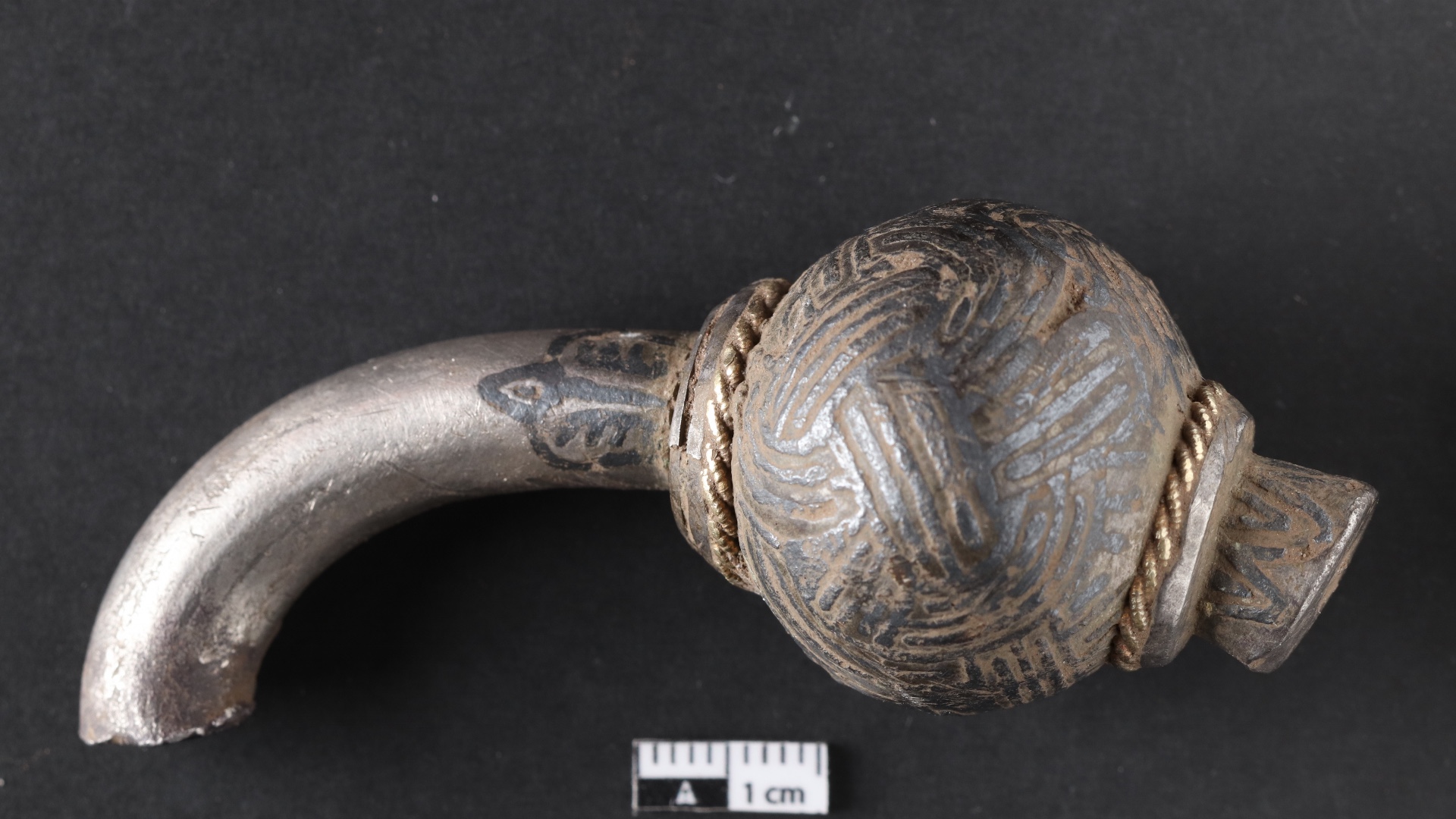Double hoard of Viking treasure discovered near Harald Bluetooth's fort in Denmark
A metal detectorist has unearthed two hoards of Viking silver in a field in Denmark, including coins made during the reign of the powerful Danish king Harald Bluetooth.

Silver coins and jewelry unearthed from a field on the Jutland peninsula in Denmark are revealing new insight into the reign and religious ambitions of the powerful Viking king Harald Bluetooth, according to archaeologists.
The objects — around 300 pieces of silver, including about 50 coins and cut-up jewelry — were discovered late last year by a local archaeology group surveying a farm northeast of the town of Hobro and near Fyrkat, a ring fort built by Harald Bluetooth in about A.D. 980.
Excavations show that the valuables were originally buried in two hoards about 100 feet (30 meters) apart, probably beneath two now long-gone buildings. Since then, these hoards have been spread around by farm machinery.
It seems that whoever buried the treasure was deliberately splitting it up in case one hoard was lost, said Torben Trier Christiansen, an archaeologist involved with the find and curator at the Museums of North Jutland.
Although some news outlets have reported that the finder was a young girl, the first of the treasures were in fact located by an adult woman with a metal detector. "But she is very flattered," Trier told Live Science.
Related: 1,100-year-old 'ceremonial' Viking shields were actually used in battle, study suggests
King's coinage
Many of the pieces are "hack silver" or "hacksilber," which was often silver jewelry cut into pieces and traded by weight. But a few are silver coins, which archaeologists determined were from Arabic and Germanic countries, as well as from Denmark itself.
Get the world’s most fascinating discoveries delivered straight to your inbox.
The Danish coins are exciting to archaeologists because they include "cross coins" struck during Harald’s Bluetooth’s reign in the 970s and 980s. Harald had converted from pagan Norse beliefs to Christianity, and spreading his new religion was part of his plan to unify the warring Viking tribes of Denmark.
"Putting crosses on his coins was part of his strategy," Trier said. "He paid the local aristocracy with these coins, to set a precedent during a transitional period when people cherished the old gods as well."
Both hoards also contain parts of a very large silver brooch that would have been worn by a king or nobleman and was probably seized in a Viking raid. But this style of brooch wasn't worn in Harald Bluetooth's lands, and so it was cut up into several pieces of hack silver instead, he said.
Archaeologists will return to the site later this year, Trier added, hopefully to learn more about the Viking Age (A.D. 793 to 1066) buildings that stood there.




Harald Bluetooth
Archaeologists aren't sure why Harald gained the nickname "Bluetooth"; some historians suggest he may have had a prominent bad tooth, as the Norse word for "blue tooth" translates to "blue-black tooth."
His name lives on today in the Bluetooth wireless networking standard, which aims to unify communications between different devices. Harald unified Denmark and, for a time, was also king of part of Norway; he reigned until 985 or 986, when he died fighting off a rebellion led by his son, Sweyn Forkbeard, who succeeded him as king of Denmark.
Jens Christian Moesgaard, a numismatist at Stockholm University who was not involved in the discovery, said the Danish coins seem to be from late in Harald Bluetooth's reign; the dates of the foreign coins do not contradict this.
"This new double hoard brings important new evidence that substantiates our interpretations of Harald's coinage and power," he said. The coins were probably distributed at the king's newly built fort at Fyrkat. "It is indeed very likely that Harald used these coins as gifts for his men to ensure their loyalty," he noted.
The crosses on the coins suggest Christianity was a key part of the king's plan. "By the Christian iconography, Harald spread the message of the new religion at the same occasion," Moesgaard said.
Editor's note: Updated at 11:04 a.m. EDT on May 2 to correct the caption for the top image, which shows an Arabic coin from one of the hoards.
Tom Metcalfe is a freelance journalist and regular Live Science contributor who is based in London in the United Kingdom. Tom writes mainly about science, space, archaeology, the Earth and the oceans. He has also written for the BBC, NBC News, National Geographic, Scientific American, Air & Space, and many others.




